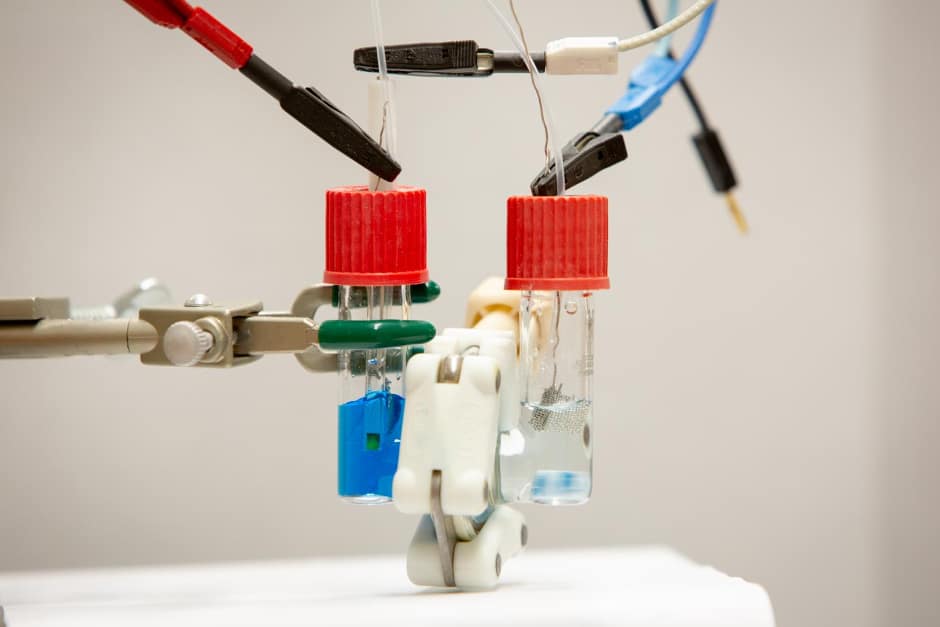
University at Buffalo (UB) scientists in New York have found that methylene blue, a common ingredient in wastewater from textile mills, is good at storing and releasing energy when dissolved in water.
The research appeared online on Aug. 13 in the journal ChemElectroChem.
"Methylene blue is a widely used dye. It can be harmful to health, so it's not something you want to dump into the environment without treating it," said lead researcher Timothy Cook, PhD, assistant professor of chemistry in the UB College of Arts and Sciences. "There's been a lot of work done on ways to sequester methylene blue out of water, but the problem with a lot of these methods is that they're expensive and generate other kinds of waste products."
"But what if instead of just cleaning the water up, we could find a new way to use it? That's what really motivated this project," said first author Anjula Kosswattaarachchi, a UB PhD student in chemistry.
The study is the first in a series of steps to assess the suitability of methylene blue from industrial wastewater in batteries.
"For this to be practical, we would need to avoid the costly process of extracting the dye from the water," Cook said. "One of the things we're interested in is whether there might be a way to literally repurpose the wastewater itself.
"In textile-making, there are salts in the wastewater. Usually, to make a redox flow battery work, you have to add salt as a supporting electrolyte, so the salt in wastewater might be a built-in solution. This is all speculative right now: we don't know if it will work because we haven't tested it yet."
In experiments, Cook and Kosswattaarachchi built two simple batteries that employed the dye - dissolved in salt water - to capture, store and release electrons.
The first battery is said to have operated with near-perfect efficiency when it was charged and drained 50 times.
Over time, however, the battery's capacity for storing energy fell as molecules of methylene blue became trapped on a membrane critical to the device's proper function.
Choosing a new membrane material solved this problem in the scientists' second battery. This device is claimed to have maintained the near-perfect efficiency of the first model, but had no notable drop in energy storage capacity over 12 cycles of charging and discharging.
According to UB, the results show that the pollutant methylene blue is a viable material for liquid batteries. With this established, the team hopes to take the research one step further by obtaining real wastewater from a textile mill that uses the dye.
"We'd like to evaporate the wastewater into a more concentrated solution containing the methylene blue and the salts, which can then be tested directly in a battery," Cook said.
Before coming to UB, Kosswattaarachchi worked in textiles, developing new fabric technologies for the Sri Lanka Institute of Nanotechnology (SLINTEC).
Textiles are one of the country's most important economic sectors, and the industry creates many jobs. But pollution is a downside, with wastewater an environmental concern.
"We believe that this work could set the stage for an alternative route for wastewater management, paving a path to a green-energy storage technology," Kosswattaarachchi said.




Nanogenerator consumes CO2 to generate electricity
Nice to see my my views being backed up by no less a figure than Sabine Hossenfelder https://youtu.be/QoJzs4fA4fo